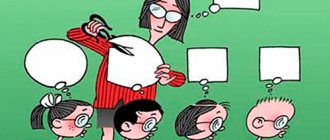Girls should wear pink, boys blue. Men do not cry. Expensive means high quality. For a woman, the main thing is to get married successfully. Fat people are good-natured people. For some, all these statements are truisms. Once having accepted them as an axiom, such people do not even think that maybe everything is different. But there are also those who consider such statements to be pure stereotypes and rely solely on personal experience. Where do stereotypes come from and how do they affect our lives? BB correspondents are thinking about this.
What is a stereotype in simple words
A stereotype is a generally accepted image of a person, phenomenon or event. The term was coined by American journalist Walter Lippmann in the 1920s.
He borrowed this word from printers. People in this profession use the word "stereotype" to refer to a printed form that allows text to be reproduced over and over again.
Walter Lippman identified several properties of stereotypes
- they make life easier;
- they are often wrong;
- they are not produced by the person himself, but are acquired from the outside;
- they are extremely stable.
The word “stereotype” itself is translated from Greek as “strong imprint.” It is a specific way of thinking that helps create certain images of events, and can also prevent a person from looking at the world from a broader perspective.
Where do stereotypes come from?
Stereotypes existed in the thinking of our ancestors long before civilization. For example, primitive man knew that his big, muscular friend was dangerous because he could rob him of his food, clothing, or woman. This primitive stereotype is still alive today, tens of thousands of years later, whenever a stranger of the same appearance encounters it.
The early humans' tendency to be wary of strangers was justified. The good-natured and naive quickly died, so we are all descendants of those who fought against strangers. Even today, many people are afraid of everyone who looks different from us: who has a different complexion, who has dyed their hair a different color or who dares to get a tattoo. Different means dangerous! And the older you get, the more wary you become of people who seem strange to you.
The dangers of stereotypical thinking
Stereotypes are considered “laziness of the brain.” Why think for yourself if others have been thinking for you for a long time. Why waste energy on an objective analysis of people's behavior if society has decided that one thing is good and the other is bad.
In the 21st century, when not only technology, but also people’s thinking is developing, stereotypes create more and more problems in the perception of the world and narrow horizons.
The more stereotypes a person has, the less educated he is and the more susceptible to manipulation by other people. Such people are called “winged”.
Many create stereotypes intentionally for their own reasons to influence society. In this way the masses can be controlled and forced to organize themselves as the creator of the stereotype wishes.
Nowadays, everyone should have their own opinion about any situation, everyone should be able to think independently and objectively assess what is happening. Expressing your views and speaking about them correctly is an important part of personal development. However, some stereotypes are necessary, as you will learn in the next chapter.
Most stereotypes are based on moral old ideas about life
What is the difference between a stereotype and prejudices and clichés?
Prejudice is a flexible concept that can change depending on specific circumstances. Bias can be identified, addressed and corrected, and changes throughout life. Prejudices arise both on the basis of a stable perception of something and as a result of momentary emotions. Thus, prejudice can arise from a stereotype.
The main difference is that a stereotype is practically irreversible, whereas a prejudice is easily formed in the mind and can just as easily be canceled or changed. In addition, the word "prejudice" has a narrower application compared to stereotype. It is used only to characterize the way people think or perceive something. It does not describe any social event or phenomenon.
Cliché is another term from the science of human behavior and typography. This is closer to a stereotype than a prejudice. In general, the term "cliché" means a standard, a pattern, a fixed, unchanging form of something. This applies to various areas - human speech, the arrangement of printed texts, the way makeup is applied, art, and so on. Even in the image of politicians there is a certain cliché. This is the difference between the term and the concept of cliché. A cliché is an unchanging form of something that can become a template for action. For example, templates for filling out forms are also clichés. Stereotype, on the other hand, has no such meaning.
How they change and what it depends on
Stereotypical behavior changes its vector over time. What was previously unacceptable has now become commonplace. This can be observed in changes in people's attitudes towards the institution of marriage.
The change in women's role models is also noticeable. Now she can climb the career ladder on an equal basis with men, occupying positions that were previously considered exclusively male.
Characteristics and specificity of the stereotype
Stereotypes are stably repeating chains (patterns) of thoughts, feelings and actions; our habitual ways of perceiving and reacting to situations. In a sense, it is a way of thinking, looking and reacting to the world. In a narrower sense, these are artificially isolated fragments of our behavioral repertoire.
Stereotypes are separate facets of the personality structure, but they do not exist in isolation, on their own, they are part of the personality. Their interrelation and degree of expression form the personality. For some, individual edges appear more sharply, and accordingly, these stereotypes appear more often and brighter; for others, the same edges are smoothed out and appear less frequently.
Stereotypes are habitual routes of so-called involuntary attention. These routes are the result of our life experiences, upbringing and heredity.
Stereotypes are divided into two types:
- Reflecting people's ideas about themselves,
- Reflecting ideas about other people, another social group.
People perceive many stereotypes as models that must be met. Therefore, such fixed ideas have a fairly strong influence on people, thus influencing the formation of character traits that are reflected in a given stereotype.
Functions:
- Allows you to dramatically reduce response time to a changing reality;
- Accelerates the process of cognition;
- Provides a primary basis for orientation in what is happening;
- Facilitate understanding (for example, the more stereotypes in the text, the easier it is to understand)
Despite simplification and schematization, stereotypes perform a necessary and useful function in the psychological regulation of processes of interpersonal understanding. This turns out to be possible because in a stereotype the volume of true knowledge often exceeds the volume of false knowledge.
10 pages, 4601 words
Stereotypes and the effects of intergroup perceptions and behavior
... groups of stereotypical traits - improves the reproduction of information about a person that corresponds to stereotypes and makes it difficult to reproduce counter-stereotypical information. However, in later... -Newly arriving counter-stereotypical information has a more pronounced influence on a person’s assessment than the stereotype. Awareness of the use of stereotypes (and prejudices). 2 points of view: 1) Stereotypes...
All stereotypes are conditionally divided into three large categories:
- with response stereotypes
- with stereotypes of perception and evaluation
- with stereotypes of thinking.
Why are stereotypes needed and how are they used?
Stereotypical thinking is inherent in every person. It was not given to us just like that. Stereotypes help save mental effort and time by helping us make quick decisions in repetitive situations.
For example, historically the division into enemies and friends was necessary. Stereotypes contributed to the automatic perception of strangers as a source of threat. This function is often in demand today.
Think about what you do when you wake up. You probably have a certain set of actions that you perform on autopilot. During this time, your brain adjusts to your daily routine - this is much more important than thinking about every step. Or, for example, when you enter a room, you see a table and a chair. You don't have to think about why you need them, you already know how to use them.
Did you know that Albert Einstein had five identical sets of clothes in his wardrobe for every day? The great physicist completed such a set so as not to waste time in the morning choosing an outfit.
The time and energy saved can be redirected to more important tasks. Mark Zuckerberg recently resorted to such tricks.
Stereotypes help free up mental resources for thinking about other thoughts and performing primitive sorting of information. Stereotypes also help us understand how to dress and behave depending on the situation and place.
Answer
Expert tested
What are communication stereotypes?
Communication stereotypes represent a simplified perception of something. A stereotype is a simple idea that has been formed in advance and has nothing to do with personal experience.
As a rule, stereotypes are formed in traditions and customs. The human brain specifically creates stereotypes in order not to analyze things again. Therefore, if people see glasses, they immediately have an image of an intelligent person who can be trusted. Or people often try to determine the character and abilities of a person by the color of his hair, by ethnicity, by citizenship, and so on.
A stereotype is a way to get to know a person faster and easier. But a stereotype often misleads a person.
A stereotype is always created in the past, from old experience and passed on. There are superficial stereotypes that are formed by appearance, and there are deep ones that do not change for a long time.
Types of stereotypes
Stereotypes can be: negative, positive, neutral, overly simplified, approximate, overgeneralized, accurate. Psychology distinguishes these types.
Ethnostereotypes
Stereotypical ideas about yourself or other people. Most often it destroys positive communication between people, which leads to negative consequences. When prejudice becomes the norm, it forms the basis for discrimination, extreme nationalism, terrorism and racism. Everyone has typical stereotypes about a resident of another state.
In the eyes of the majority:
- Typical Chinese: short, talkative, loves rice;
- Typical American: self-confident, smiling, loves hamburgers;
- Typical Frenchman: dude, lover of romance, gourmet;
- Typical Englishman: primitive, loves porridge, reserved.
Similar stereotypes exist everywhere. We laugh at jokes about Armenian radio, Chukchi, crests, Muscovites. We joke about the slowness of Estonians, the greed of Jews. Jokes based on stereotypes may be offensive to some, but they do not pose a serious threat. However, ethnic stereotypes can be compared to blindfolds that narrow our horizons and harm us. They prevent you from appreciating the culture of another country, making good foreign friends, etc.
Gender
They represent preconceived notions about men and women. These superstitions have existed for centuries and have their origins in the hunting of men and women as guardians of the home. Ancient myths and ballads are also present. In the modern world, gender roles have undergone many changes, but stereotypes are firmly rooted in the minds of the majority. The most common of them are: “Men don’t cry”, “A woman’s place is in the kitchen” and so on. Many of us adhere to this way of thinking.
Individual
Refers to the individual personality. Refers to the opinion of an individual, which may coincide to some extent with social stereotypes or completely contradict them. They are formed at the individual—personal level. They are also called socio-psychological.
Social
Refers to a group of people. Help us shape our worldview. At the same time, we separate “our” group of people from others. This can be both empowering and depressing. In its simplest sense, a social stereotype is a stable and somewhat simplified idea of a phenomenon, group of people, event, etc. Example: politicians lie constantly, Italians are passionate and emotional, redheads are impulsive.
Social stereotypes are rarely accurate - most often they are false and perform a reactionary function, distorting people's knowledge and causing discord in interpersonal relationships. At the same time, they play a big role in assessing the world.
Associative
Such stereotypes are rarely mentioned. However, the associations formed in the human mind are based almost exclusively on various stereotypes. Associative perception is influenced by customs, traditions and ideas from different areas of life.
For example, if the weather forecast says it will rain, most people dress warmly and don't forget an umbrella. And only a few will think not about an umbrella, but about a mackintosh (raincoat). This is why the vast majority of people associate rain with umbrellas. You can also take an example from the holidays. We associate Christmas with a decorated Christmas tree, gifts, sales, and so on. This is an associative stereotype.
Cultural stereotypes
Cultural stereotypes of society influence human emotions, which are associated with physicality and supported by gestures. Emotions and gestures are a universal language among culturally similar peoples, but in individual countries they can take on completely different meanings. Before traveling to other countries, it is useful to learn about the customs of these countries. Culture unites: stereotypes of purpose, communication, perception, worldview. Stereotypical behavior is an important stage in the formation of (religious) rituals in different cultures.
Behavioral stereotypes
Most people consider these stereotypes to be correct, unchangeable and completely natural. Many people don't even realize they are dealing with a stereotype.
What is a stereotype in human behavior? By definition, this is a specific, fixed system of reactions and behavioral skills characteristic of a certain group of people. Such stereotypes may be due to age, ethnicity, cultural values, social status and other similar factors.
An example of such stereotypes is the behavior of adolescents that accompanies a period of hormonal changes in the body. The so-called “teenage rebellion” is precisely a behavioral stereotype. Another, no less established stereotype is the expected behavior of representatives of “privileged” social classes. Snobbery, selfishness, narcissism and other similar traits are always expected from the so-called “elite”.
Against the backdrop of stereotypes, problems such as homophobia, xenophobia, and gender inequality develop
The role of stereotypes in human life
Social stereotypes play a huge role in everyday communication due to a number of their features.
1. They seem to predetermine the perception of a specific life situation, since we comprehend the social reality around us not directly, but indirectly, through the prism of social stereotypes that have developed in our minds or learned from the outside.
Indicative in this regard is an experiment conducted by the famous psychologist A.A. Bodalev. During the experiment, a group of adult subjects were shown several photographs. Participants in the experiment, who saw each photo for five seconds, had to recreate the image of the person they had just seen. The display of the photograph was preceded by an installation on a certain stereotype - a characteristic of the people depicted in it. For example, they said “Now you will see a portrait of a criminal” or “... a portrait of a hero”, etc. 35.3% of the subjects were influenced by the proposed attitude, 54% did not experience any noticeable influence, and 10.7% actively resisted the proposed stereotype.
Here are the portrait characteristics given to the young man depicted in the photograph: “This beast wants to understand Something. Looks smart and without interruption. Standard gangster chin, bags under the eyes, massive figure, aging, thrown forward (set to the “criminal” stereotype).
“A young man, 25-30 years old. The face is strong-willed, courageous, with etching features. The look is very expressive. Hair is disheveled and unshaven; The collar of the shirt is unbuttoned. Apparently, this is the hero of such and such a battle, although he is not wearing a military uniform (dressed in a checkered shirt)” (the setting is “hero”).
13 pages, 6142 words
Bazarov. A new personality type for the post-crisis period. UP.3.10
... the meaning system of a language used for communication. Sometimes we are faced with the reduction of a person - reducing him to a text. ... communities simulate the presence and proximity of communicating people. Due to virtualization, a person deals not with an object, but with ... the disjointedness,” “fragmentation” of the social world. With the development of humanistic values, man became more free in his manifestations. He can choose...
The polarity of judgments about the same person is explained by the fact that the photograph itself provides little information and the participants in the experiment are forced to reproduce the signs of the proposed stereotype.
2. The social stereotype “saves thinking” by depersonalizing and formalizing communication. Identification with an already known model predetermines a standard reaction, allows you to use an already familiar model of role behavior, and act as if automatically. It is for this reason that official communication with strangers and unfamiliar people occurs more according to a stereotype.
So, for example, every more or less experienced seller develops a set of stereotypes of buyers such as “attentive” - “absent-minded”; "picky"; “polite” - “rude”, etc., which allows the seller, without hesitation, to behave accordingly.
3. Each social stereotype includes a description, prescription and assessment of the situation, although in different proportions, which fully corresponds to the components of the human “I”.
4. Stereotypes are very persistent and are often passed down from generation to generation, even if they are far from reality. This includes, for example, the common belief of many in a good king (president), who will solve all problems at once and make life better.
5. The further we are from a social object, the more we are influenced by collective experience.
Pros and cons of stereotypical thinking
People who are accustomed to stereotypical thinking can live full lives and even benefit from this trait. The main advantages of stereotypical thinking include:
- faster decision making;
- less mental fatigue when analyzing information;
- belonging to a particular social group;
- clearing memory of unnecessary information.
At the same time, the tendency to think in stereotypes imposes certain limitations. Its main disadvantages are:
- wrong decisions and wrong actions;
- self-confidence, inability to think critically;
- inability to independently analyze and draw conclusions;
- stereotypical thinking hinders development.
Stereotypical thinking has more disadvantages, so it needs to be combated by developing critical thinking skills and objective analysis of incoming information.
The most common examples from life
Social stereotypes are present in all spheres of human life, new clichés and patterns appear regarding family and friendship relationships, about women and men.
The most famous mindsets and perception stereotypes:
- The housewife is an unkempt woman of no age
, wearing a dirty apron and curlers. She doesn't work, but she always looks exhausted. Nowadays, many women sit at home, work on the Internet, lead an active life, take care of their families and raise children, and still look great. - After the birth of a child, you can say goodbye to your career
and beautiful figure. But in fact, work and appearance after childbirth are a woman’s individual choice. - Old man means wise man
. Old age and wisdom are not synonymous; respecting people only because of their age is stupid. Each age group has completely different representatives, good and bad.
Often in modern society you can hear that power spoils people, a woman can be either smart or beautiful, you can’t earn big money honestly.
How to fight stereotypes?
As you know, stereotypes are designed to relieve your brain of unnecessary stress. But they also limit your prospects. To think more broadly, you need to destroy stereotypes, expand the boundaries of awareness and think more creatively.
You shouldn’t blindly believe in what people once came up with. You have to put in the effort, think independently and not be afraid to have your own opinion. If we are constantly confronted with information that contradicts them, they are destroyed.
How to distinguish stereotypical beliefs from conscious beliefs? Just ask yourself: “How do I know this?” If you yourself have had such an experience and are convinced of the correctness of this statement, then this is not a stereotype.
Many stereotypes can be destroyed in just a few minutes. For example, “All blondes are fools.” Scientists have proven that hair color does not affect intelligence. You can name a few blondes you know who don't fit their description.
Or think of celebrities who do not fit the stereotype: Angela Merkel, JK Rowling, Hillary Clinton, Elizabeth Gilbert. The stereotype was destroyed. In everyday life we come across many clichés. As a result, the brain will learn to think more broadly, and most prejudices will disappear on their own.
In some cases, we can say that stereotypes help to live, but more often they interfere with living fully, limiting the activity of thinking and not allowing consciousness to go beyond the templated worldview. An example is the stereotype “It’s good where we are not.” Following it, a person becomes convinced of the impossibility of a comfortable existence in the environment, which leaves an imprint on his condition. In his opinion, all other countries are prosperous and the people living in them are much happier.
Such absurd ideas can quickly become depressing. A person who follows a stereotype does not try to find happiness and harmony, because he is convinced that he will not succeed. And yet you should not blindly follow platitudes you hear accidentally. The aforementioned stereotype of a ghostly wonderful life “where there is no place for us” makes us believe that we have to put in minimal effort to live at a high level. A feeling of envy, irritation and dissatisfaction with one’s own “unsuccessful” life arises.
The main method of combating stereotypes is to question them and analyze them. Don't blindly trust stereotypes, challenge them, check the data, form your own opinion. Gradually, you will get rid of entrenched stereotypes and prevent the formation of new prejudices.
Think about what stereotypes you use every day. Look for ones that have no real evidence to back them up. Example: “All blondes are fools.” When you start digging deeper, you will find that among fair-haired women there are many female doctors, talented doctors, noble teachers and many other individuals who do not fall under the definition of “dumb”.
Look for refutations and other claims that have no basis. An example of a stereotype: “It doesn’t matter what the price is, it doesn’t matter what the product is.” You may be surprised, but here you can find a lot of high-quality and stylish things at low prices. At the same time, expensive purchases can disappoint after the first purchase, raising suspicions of a defect or counterfeit.
A person can follow an absurd stereotype for a long time and not even notice it. Ask yourself, are there such people in your perception? If you can't get rid of them, try meditation. This will teach you to think separately from society and your immediate environment and draw your own conclusions. Try to analyze familiar stereotypes and form your own opinion about them.
Think about the actions you take automatically. Spend some time analyzing them. Try to pay attention to your actions and see which of them are dictated by stereotypes. Learn to be independent of public opinion and develop your own perceptions and imagination.
Stereotypes can and should be fought in modern society
How to get rid of the influence of stereotypes?
In order to get rid of the influence of stereotypes, it is necessary to understand which stereotypes are conscious and accepted (that is, necessary and useful), and which ones carry negative messages and are obstacles to the formation of one’s image.
Conscious and accepted stereotypes are those that have been obtained through experience and tested in practice. A person who has his own opinion (unlike stereotypes) does not speak in cliched phrases. If these beliefs fit harmoniously into his picture of the world, then he says: “I believe...” - and can give his own explanation for this. Another option is that a person, having accepted a stereotype, passed it through himself, his experience, and then changed it in a way that suited him.
14 pages, 6737 words
Topic 2. Man in the mirror of economics and psychology. Psychological...
...understand, appreciate, use. The most successful metaphorical definition of the cognitive approach in psychology is: “A person is first of all a Thinker, not a Doer,” which emphasizes the recognition of... the source of activity (the influence of internal factors). Those. Human behavior is influenced by internal factors, external factors and a person’s perception of a particular situation. The purpose of a person’s action can be...
In order to “rework” received stereotypes, there is the following exercise, which helps you understand which beliefs are yours and which are someone else’s. Feelings are indicators of acceptance or rejection.
It is necessary to write down all the “catch phrases” that were spoken or that were received non-verbally, that is, through the experience of communicating with different people, and not in the form of words. Read them again. Listen to yourself. What phrases elicited an emotional response? What catches you? Where do feelings and energy appear? Then you need to put an empty chair in front of you and imagine on it the person from whom this “message” was received in one way or another. Try to express what you really feel, what has never been said before.
Each stereotype requires careful emotional processing in order for it to cease to influence. This gives you greater freedom to do what you think is important, do what you really want, and as a result, you will be surrounded by people who share your values and rules.
What are the stereotypes: examples
Below are some examples of modern stereotypes. If you find this list incomplete, you can add to it by writing your own examples in the comments. Let's start with gender stereotypes.
A woman's place is in the kitchen
Unfortunately, even now, in a developed and equal society, you can very often hear such phrases from men. Some people believe that a woman is a stupid and helpless creature who should cook borscht, wash, clean and remain silent in male society.
This is a historically Eastern model of thinking, but Slavic men often adhere to it, just not so obviously and categorically.
A girl in business is not taken seriously. If a man comes to a business meeting, he is a priori taken more seriously than the fair sex. Everyone forgets that in any business, ambition, responsibility and a sense of duty are important, not gender differences.
A man must!
Since childhood, mothers have been trying to raise real (in their understanding) men, trying to knock out all signs of weakness from the boy, because, after all, “a man must be strong!”
This is inherently correct, but sometimes when there are too many such stereotypes, it can lead to low self-esteem due to the fact that a person does not fit into the invented norms. And after that this will lead to many problems in building relationships with the opposite sex.
How often can you hear the mother of a little boy on the street: “Stop crying, men don’t cry!” From childhood, boys are taught to keep all emotions to themselves, which can lead to serious problems in the future (read more about this in the article on psychosomatics). Tears are a natural process, so everyone cries, regardless of gender and age.
Both men and women have tear glands and ducts that allow us to clear moisture from our eyes. Tears are produced under the influence of certain factors. The difference is that boys are raised somewhat more strictly than girls. From childhood they are taught that they must hide their feelings and emotions, that they have no right to be weak, and so on and so forth.
Why do men die earlier from ulcers, strokes, and heart attacks? Because women are allowed to cry and vent their negative emotions, while it is more difficult for men to do this due to social stereotypes.
Negative emotions never leave the body. They accumulate like a snowball, and one day they will make themselves felt. Therefore, it is necessary to find ways to get rid of negative emotions. Sublimation helps fight negative emotions and internal tension.
Men shouldn't feel pain
Debilitating mental or physical pain should be easily tolerated by men. Any injury is nonsense, a blow below the belt from your best friend - throw him out of your head and forget, breaking up with your girlfriend, divorce - the opportunity to be free and have fun at your own discretion.
In reality: vulnerability to experiences and physical pain is highly individual.
All people have a certain pain threshold, which depends solely on genetics. The level of stress resistance and physical development are also important.
The male body is designed in such a way that, thanks to the high content of testosterone, it can more easily endure physical pain. However, this does not mean that a woman cannot be in better physical shape than a member of the opposite sex. And judging everyone from the same position is, to say the least, unreasonable.
When it comes to mental state, there are no clear criteria. Everyone deals with this differently.
Many stereotypes are directly related to the gender roles that exist in our society
A man must be the breadwinner in the family
This statement is very common. For some reason, it is believed that since the days of hunting mammoths, it is the strong half of humanity that must fully provide for the entire family, returning home from time to time. The rest of the time, the man works hard in his profession, earning a living. The woman, on the other hand, takes care of the kitchen, the house, feeds and gives birth to children.
But what if the couple decided to do the opposite? The woman makes a career, and the man takes care of the house and children. By definition, he is already a pimp. But is this really so?
The reality: masculinity is not determined by salary. Firstly, as we all know, and this has been proven in practice, taking care of a home and children is not so easy, and sometimes much more difficult than working. From this we conclude that all decisions in a couple should be made together and be mutually satisfying, regardless of the division of roles. Secondly, if the wife’s comfort zone is work, her own business, climbing the career ladder, and the man wants to take care of the house and knows how to do it masterfully, and for them this is the only acceptable solution, then why not. The result and the internal atmosphere are important, not stereotypes and generally accepted ideas.
Good children obey their parents
Another stereotype from parent-child relationships that can lead to tragic consequences for the child’s psyche. When parents often tell a child that he is bad because he does not obey, the child’s psyche perceives these words as: “I love you only if you are good.”
A sense of security and unconditional love from parents is important for children's self-esteem. Regardless of behavior. If children are spoiled, do not deprive them of love and do not tell them that children used to be different, young people have become dissolute and in old age there will be no one to bring them a glass of water.
Right wrong
It is considered right to receive a prestigious education at a renowned university. Prestigious professions are usually lawyers or economists. The wrong professions are artists, actors and singers.
From childhood we are taught not to listen to ourselves, not to follow our dreams, but to live “correctly.” But everyone forgets that this very “right” is different for everyone.
The most important thing in life is to do what makes you happy. If a person enjoys his work, he will definitely achieve success in his business. Unfortunately, many people go to work just to earn money, without thinking about their emotional state. This is why so often even the richest people experience crises, depression and constant dissatisfaction with their lives.
If you haven't decided what you want out of life yet, you might want to read about how to find a job that's right for you.
Prejudice in professions
Depending on your personal experience with a particular profession, you may come to certain stereotypes. For example: “police officers are brave, courageous and strong”, “doctors can do anything” or “you are a psychologist, let me read my thoughts.”
These are all stereotypes about professions that have nothing to do with real work. It all depends on the specific person and the situation in which he finds himself, and not on the general idea of the profession.
Age
Teenagers are always in conflict with their parents. Young people are promiscuous and commit immoral acts (adults know better what they should do). At thirty, everyone experiences a midlife crisis. An elderly person should be gloomy and talk only about illness. If he's cheerful, it's best to stay away.
Money
Wealth is real happiness. A person who earns little is a priori unhappy. Every person must persistently strive to climb the career ladder to a high position, otherwise he is a failure. Otherwise he is a failure. Only with a good income can you build a strong family with your loved one. Without money, happiness is impossible.
The most popular stereotypes about Russia
Usually, when people travel abroad, they have in their heads a list of so-called stereotypes about a particular nationality. Over the years of its existence, Russia has accumulated quite a few stereotypes that foreigners attribute to it. Some of them are partially true, others are completely false, and this can be said about any country and its people.
It is very important to understand that not all people are the same size. So it's time to debunk some age-old myths about Russians.
There are many prejudices and stereotypes about Russians in Russia
Most popular name
Ivan is the most popular male name in Russia. It's not even Russian. Rather, it is an East Slavic version of the Hebrew name. Between 2010 and 2021, Ivan was the sixth most common male name. The top three included Alexander, Sergey and Dmitry.
By the way, even Russians often call the name Natasha the most popular female name. However, Natasha is in third place, Elena is in first, and Olga is in second.
Appeal
Russians call each other “comrades.” This word was coined by the Bolsheviks to replace the pre-revolutionary ways of addressing people as “Mr.” and “Madam.” You can address people as “comrades,” but that has long since disappeared from everyday language.
And if you suddenly hear such a speech, then most likely it was said with a touch of irony.
How Russians dress
All Russians wear a hat with ears. Also a military hip belt with buckle. And felt boots with tops. And, of course, the traditional Russian shirt! Russians do not have traditional clothing. Russia consists of many nationalities and cultures, which entails completely different clothes.
Ushanka is still good for winter, but it was quite popular in Soviet times. In those days, the clothing industry belonged to the state, so hats with earflaps were produced according to the state plan. Nowadays, most people prefer regular knitted hats, as a hat with earflaps can get terribly hot at -15°C.
Foreign languages
Russians also understand other Slavic languages, such as Polish, Czech, Ukrainian, Bulgarian, etc. - and say them.
To the Western ear, almost all Slavic languages may sound the same because they come from the same language group. However, there are both similarities and significant differences - especially in vocabulary and grammar.
Many Russians can understand some Ukrainian or Belarusian words, but learning Serbian, Polish or Czech will be a little more difficult for a Russian.
Bears as part of society
Bears walk the streets of Russian cities. A bear or elk that wanders into a remote Russian village is not used to walking along city streets. This is too dangerous for both animals and people.
Using stereotypes in business communication
The limited personal experience and the inaccessibility for most people of empirical verification of the information they receive about a whole range of social phenomena create the possibility of manipulating social stereotypes.
The methods of using stereotypes discussed below are not uninteresting from the point of view of the practice of business communication.
- Labeling: a person is “fitted” into a stereotype such as “demagogue”, “populist”, “womanizer”, “drunkard”, etc. The favorite means of specialists in the field of intrigue is successfully used to eliminate competitors in political and business life. As a counter-argument, attention should be focused on the inadmissibility of replacing real facts with subjective assessments
- “Brilliant uncertainty”, the use of stereotypes, the meaning of which is not entirely clear and unambiguous, but evokes positive emotions, since here the assessment prevails over the description. This includes such common concepts as “democracy”, “human rights”, “universal values”, “in the interests of the law”, etc. Option for communicating with management: “Your decision is undemocratic (violates human rights, social justice)!”
- Appeal to the majority as a means of strengthening one’s position. The volitional aspect predominates. This includes judgments like “at the numerous requests of the working people”..., “all Russians unanimously support...”, etc. Arguments like “the team has an opinion...”, “the team believes that...” are suitable for business communication.
- Transference: using old symbols that already have some value. In business communication, a reference to an authoritative person is possible in several ways: personified - a reference to a specific managerial person;
- impersonal - “They know there!”; “I’m in the know”; “And then I called, you know, who...”; “We are discussing a problem and then I came in…”, etc.;
- use of quotes - “Socrates also said that...”. Common people, or “their guy.” It is based on identification with the people and subordinates.
The depersonalization of communication that arises due to stereotypes in some cases does not facilitate, but on the contrary, complicates business communication and interferes with the establishment of informal relationships. Translated into the language of social psychology, the well-known metaphor “one is greeted by his clothes...” means that “one is greeted by a stereotype and seen off by his mind!” This problem is especially relevant in the “manager-subordinate” relationship system.
5 pages, 2338 words
The concept of the psychology of influence in the book by R. Cialdini “Psychology of influence”
... Benevolence 7. Authority 8. Deficit References Introduction Robert Cialdini's work “Psychology of Influence”, one of the best textbooks in which motivation mechanisms, ... informed decisions are subjected to modern analysis. Sometimes we think automatically, often under the influence of some stereotypes. For example, well-known stereotypes include “all blondes are stupid”, “men are smarter...
Communication attitudes and stereotypes
An attitude is a state of internal readiness of a subject to react in a certain way to objects of reality or to information about them.
The term “installation”, corresponding to the English concept of “attitude”
, or in the Russian version “attitude”, was introduced into Russian psychological science by the famous representative of the Georgian (Soviet) psychological school D. N. Uznadze. In his opinion, an attitude is a readiness to perform any mental or behavioral acts of a person adequately for a given situation. He argued that a person’s reaction to a situation (evaluative or behavioral) is determined not only by the situation itself, but also by his internal, unconscious predisposition to react in a certain way. Thanks to the installation, a person does not need to re-determine each time what his needs are at this particular moment and choose the best ways to satisfy them. All this, based on past experience, is already recorded in the installation.
In social psychology, it is customary to distinguish several functions of attitude in the process of cognition and motivation of behavior: cognitive
(regulates the process of cognition),
affective
(channels emotions),
evaluative
(predetermines assessments) and
behavioral
(directs behavior).
To understand the difference between them, we can use an example known in the history of attitude studies as “Lapierre’s paradox.” In 1934, the American psychologist R. LaPierre traveled to a significant number of small American towns, accompanied by two Chinese students. They stayed in hotels, visited restaurants and cafes and, with the exception of one case, were received quite normally. After completing his trip, Lapierre sent letters to the owners of these hotels and restaurants asking if they were ready to host him with a group of friends, including the Chinese. 93% refused. Lapierre's data were later confirmed by other researchers. In this example, we can see that the evaluative attitude towards representatives of a particular racial group in a situation requiring a behavioral response was supplanted by the behavioral attitudes of the hotel or restaurant owner towards the client.
The effect of Lapierre's paradox should be kept in mind when conducting various surveys regarding future actions or intentions. The answer will not necessarily be implemented in behavior.
Positive attitude
in relation to a loved one, it forces a person to subconsciously not notice and not remember information of an opposite nature (it is no coincidence that folk wisdom says that love is blind).
Negative attitude
does not allow us to see anything positive in the subject. A negative attitude directs personal or mass attention to only one side of the object and carries out a unique selection of information.
The barrier function gives the installation special stability, making it useless to try to convince the person making a decision based on the installation. At best, he will not hear our arguments, at worst, he will form a negative attitude towards us as a source of information.
A stereotype has a more complex structure compared to an installation. This concept was first used by the American journalist and political scientist Walter Lippman in his work “Public Opinion.” Translated from Greek, a stereotype is a “hard imprint” of something. Stereotypes are stable images of surrounding objects or phenomena that are little dependent on empirical knowledge. Strictly speaking, the formation of an image of an object in the mind always includes an element of stereotyping, that is, a certain degree of simplification, highlighting significant aspects and characteristics that are not important for the subject, and repressing them.
A stereotype in communication arises when we get to know each other, which has a specific meaning in social psychology. As a rule, both modern and established stereotypes arise on the basis of past experience, caused by a person to create any conclusions, despite the limited information. Often stereotypes arise regarding a person’s group affiliation, for example, his or her membership in a particular profession. As a result, pronounced professional traits in a person met in the past, a representative of this profession, are considered as traits that are inherent in every representative of this profession.
Stereotypes are passed on from generation to generation, they are so stable that they are sometimes perceived as a given, as a biological fact, as reality.
Stereotypes in communication are divided into two categories: Superficial stereotypes. Deep stereotypes.
The first category refers to ideas about a particular people, which is determined by the international, domestic political or historical situation. These stereotypes change or cease to exist depending on the stability of society, on events that influence the formation of views among the majority of the population. Historians and those interested in the socio-political processes of society are primarily interested in studying such stereotypes.
Deep stereotypes are unchanged. They, in comparison with surface ones, do not change over a certain period of time. They are stable and are of greatest interest in the study of national character characteristics. Social stereotypes can be defined as a negative phenomenon that prevents adequate, not distorted, mutual understanding.
Stereotypes are an integral part of mass culture. They are formed on the basis of: Age, Gender, Race, Religion, Nationality
Date added: 2017-01-13; ; Copyright infringement?
Your opinion is important to us! Was the published material useful? Yes | No
Source: https://studopedia.su/20_74195_ustanovka-i-stereotipi-obshcheniya.html











